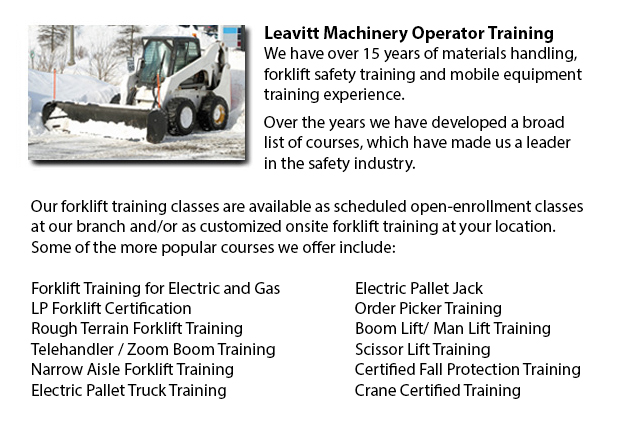
Skid Steer Ticket Vernon - The lift arms on the skid-steer loader are situated alongside the driver together with pivots at the back of the driver's shoulders. These features makes the skid-steer loader different than the traditional front loader. Because of the operator's proximity to moving booms, early skid loaders were not as safe as traditional front loaders, specially through the operator's exit and entry. Modern skid-steer loaders at present have numerous features so as to protect the driver like for instance fully-enclosed cabs. Like other front loaders, the skid-steer model could push materials from one site to another, can load material into a trailer or a truck and could carry material in its bucket.
Operation
Usually a skid-steer loader is able to be used on a jobsite in place of a big excavator by digging a hole from the inside. To begin with, the skid-steer loader digs a ramp leading to the edge of the desired excavation, and after that it utilizes the ramp so as to excavate material out of the hole. As the excavation deepens, the equipment reshapes the ramp making it longer and steeper. This is a remarkably helpful method for digging below a structure where there is not sufficient overhead clearance for the boom of a big excavator. Like for instance, this is a common scenario when digging a basement below an existing house or building.
There is much flexibility in the accessories which the skid steer loaders are capable of. Like for instance, the conventional bucket of many of these loaders could be replaced with several accessories which are powered by the loader's hydraulic system, comprising pallet forks, backhoes, tree spades, sweepers, mowers, snow blades and cement mixers. Some other popular specialized buckets and attachments include angle brooms, dumping hoppers, wood chipper machines, grapples, tillers, stump grinders rippers, wheel saws, snow blades, and trenchers.
History
During the year 1957, the very first front-end, 3-wheeled loader was invented in Rothsay, Minnesota by brothers Cyril and Louis Keller. The brothers invented the loader to be able to help a farmer mechanize the process of cleaning turkey manure from his barn. This machinery was light and compact and included a back caster wheel which enabled it to maneuver and turn around within its own length, allowing it to execute the same tasks as a conventional front-end loader.
In the year 1958, the Melroe brothers of Melroe Manufacturing Company in Gwinner, N.D. obtained the rights to the Keller loader. They hired the Keller brothers to continue refining their loader invention. The M-200 Melroe was actually the result of this partnership. This particular model was a self-propelled loader which was launched to the market in 1958. The M-200 Melroe featured a two independent front drive wheels, a rear caster wheel, a 12.9 HP engine and a 750 lb lift capacity. By 1960, they changed the caster wheel together with a back axle and introduced the first 4 wheel skid steer loader that was known as the M-400.
The term "Bobcat" is used as a generic term for skid-steer loaders. The M-400 immediately after became the Melroe Bobcat. The M-440 version was powered by a 15.5 HP engine and has rated operating capacity of 1100 lbs. The business continued the skid-steer development into the middle part of the 1960s and launched the M600 loader.
-
Heavy Equipment Training Vernon
Heavy Equipment Training Vernon - The two most common kinds of heavy equipment training are categorized into the categories of equipment; equipment which is fashioned with tracks and those with rubber tires. The tracked vehicle are heavy duty machine... More -
Aerial Lift, Boom Lift, Man Lift, Scissor Lift Training in Vernon
Lift tables or scissor platform lifts could lift up both people and materials vertically. They are most often utilized in industrial, construction and commercial environments. Usually, the use of a scissor lift is to lift and lower materials from one... More -
Crane Operator Classes Vernon
Crane Operator Classes Vernon - Crane operator training is for operators and supervisors of overhead lifting equipment. The course is suitable for both current and new operators. Course content addresses relevant provincial, state and federal safety... More -
Zoom Boom Training Vernon
Zoom Boom Training Vernon - Zoom Boom Training focuses on correctly training potential operators on variable reach forklifts. The training objectives consist of gaining the knowledge of the machine's physics and to be able to define the tasks of the... More -
Manlift Ticket Vernon
Manlift Ticket Vernon - The Elevated Platforms and Manlifts Certification course helps to provide the needed training on the safe operating procedures, work practice, rules and regulations regarding the daily activities for the operators of this mach... More -
Scissor Lift Ticket Vernon
Scissor Lift Ticket Vernon - The scissor forklift has been a great advantage to many businesses in view of the fact that the effort and manpower to run one of these machines is very minimum. Furthermore, numerous workplace injuries have been prevente... More -
Aerial Lift Safety Training Vernon
Aerial Lift Safety Training Vernon - There are roughly 26 to 30 construction fatalities in North America due to the utilization of aerial lifts. Nearly all of the individuals killed are craftsmen like for example painters, electrical workers, laborer... More -
Forklift Certification Courses Vernon
Forklift Certification Courses Vernon - Forklift certification courses really help to be able to make sure that companies using forklifts, comply with the regional and local rules. The drivers of the forklift must go through forklift certification be... More

Forklift Training Vernon
TOLL FREE: 1-888-254-6157
Vernon, British Columbia
forklifttrainingvernon.com
Email Us
About Us


